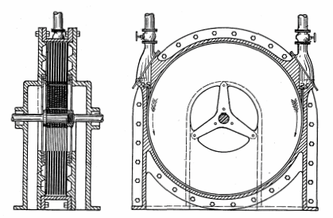Yes, everyone is skeptical of Tesla, but that is not what this post is about. This is about a bladeless pump - which clearly works. I’ll link to the best explanations of the working principle of the turbine/pump and schematics.
Nikola Tesla’s Revolutionary Engine Still Lies Untouched, Here’s How It Works
(PDF) Development Of Tesla Turbine For Green Energy Applications
Tesla Turbine
Study and Design of Bladeless Tesla Turbine

The Tesla turbine works like all conventional pumps, you have an intake and a discharge side, but, this is where the similarities end. Conventional pumps are built around the bladed impeller and spin in a single direction. Tesla concieved of something entirely different, a pump that uses a series of discs that look and act similar to the friction plate on a manual transmission.
How Clutches Work
As fluid is introduced, the central shaft begins to rotate - which the plates are mated to. Due to the principle of the “boundary layer effect” the inherent friction and viscosity of the fluid grabs these plates and causes the pump to increase in speed. As the pump speed increases (measured in rpm’s, not discharge volume yet) the efficiency increases. Being a former volunteer firefighter I’ve spent a decent amount of time around water pumps as a driver operator and engineer. Generally, centrifugal pumps are connected to either a PTO (powered take-off), or have their own engine. Tesla’s turbine/pump requires neither, or the requisite priming.
Now this is where the concept gets more interesting. As you add or subtract turbine discs so you increase or decrease pump speed in rpm’s (rotations per minute) and pump discharge rate in gpm’s (gallons per minute). You could also increase or decrease pump speed or efficiency by increasing the diameter of the turbine discs as well.
Based on the explanations and diagrams, this turbine not only looks feasible, but highly applicable and scalable. Everything I research I research for a singlular purpose - I want to build it. I’ll be constructing some water cisterns next year and want to build a Tesla turbine for my inevitable pumping requirements.
If you’ve made it to here, feel free to weigh in on materials science or over-unity, I’m mostly thinking out loud.
